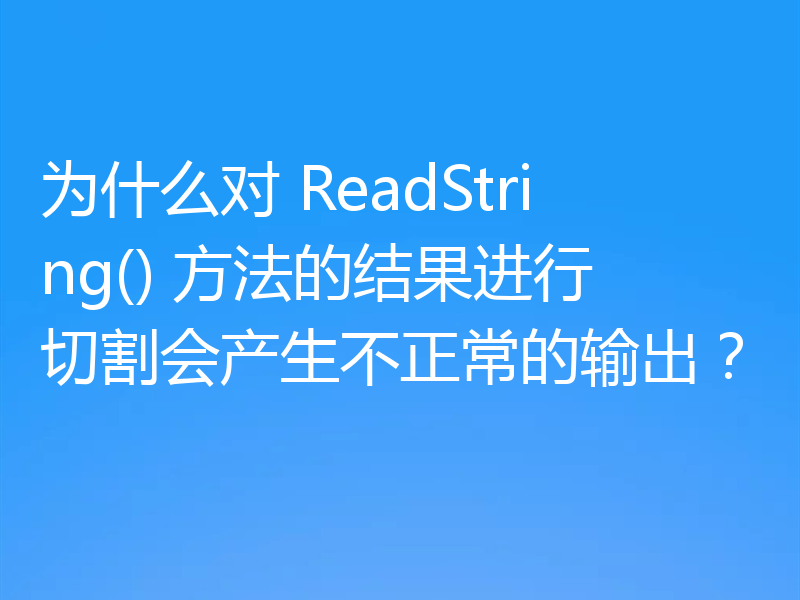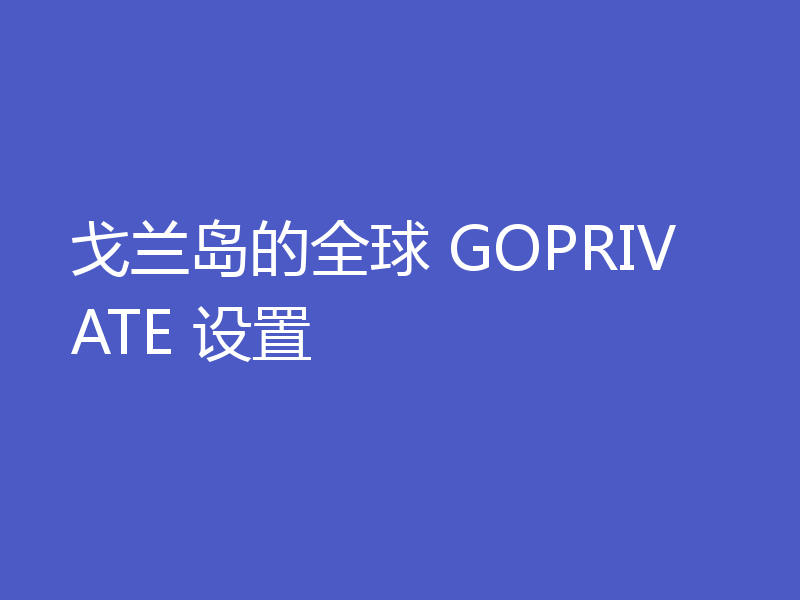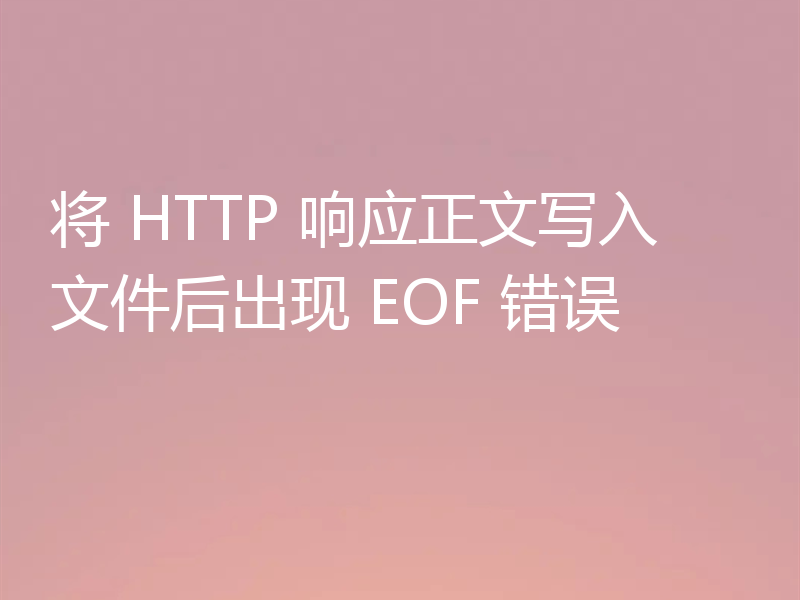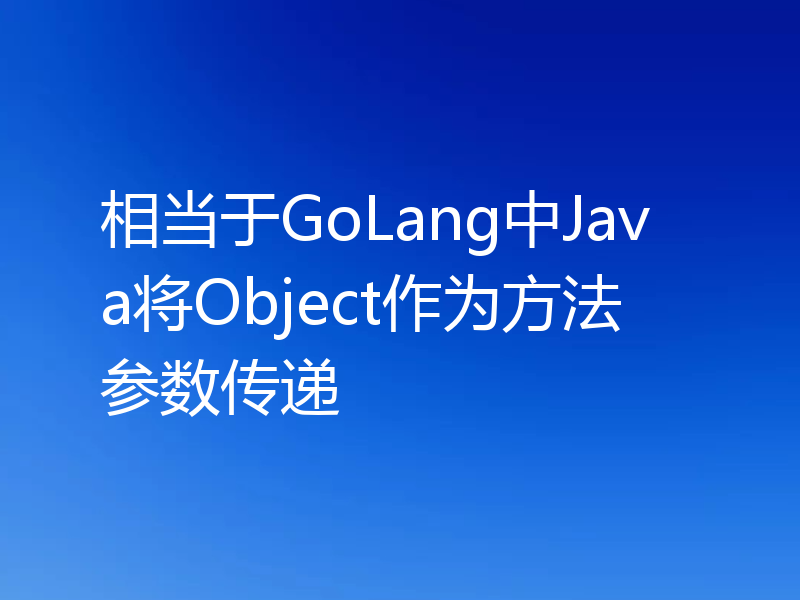解压缩 JSON 文件并转换为数据结构
来源:stackoverflow
2024-03-19 15:57:32
0浏览
收藏
本文介绍了解压缩 JSON 文件并将其转换为数据结构时遇到的问题。尽管解压缩过程成功,但结构体并未填充。文章分析了使用 json.unmarshal 和 json.decoder 的尝试,但都没有成功。作者寻求帮助,以找到缺失的步骤,并希望在读取时不出现错误,并且结构中包含所有键。
问题内容
我正在编写一个 trie ds,json gzipped 到文件 triesample.json.gz 中,并将其读回到结构中。奇怪的是,解组成功,但结构体未填充。
我尝试了 json.unmarshal 和 json.decoder 但没有成功。需要帮助来找到我在这里缺少的东西。读取时不会抛出任何错误,只是该结构没有任何键。 如果我尝试正常的 json marshal -> 写入文件并从文件读取 -> unmarshal,它可以正常工作。
var charSet = "0123456789bcdefghjkmnopqrstuvwxyz"
const logTagSlice = "trie.log"
type trieSlice struct {
Children []*tNode `json:"c"`
Charset map[int32]int8 `json:"l"` // Charset is the legend of what charset is used to create the keys and how to position them in trie array
logger loggingapi.Logger `json:"-"`
capacity int `json:"-"` // capacity is the slice capacity to have enough to hold all the characters in the charset
}
type tNode struct {
Children []*tNode `json:"c"` // children represents the next valid runes AFTER the current one
IsLeaf bool `json:"e,omitempty"` // isLeaf represents if this node represents the end of a valid word
Value int16 `json:"v,omitempty"` // value holds the corresponding value for key value pair, where key is the whole tree of nodes starting from parent representing a valid word
}
// NewTrieSlice returns a Trie, charset represents how the children need to be positioned in the array
func NewTrieSlice(charset string, logger loggingapi.Logger) *trieSlice {
m := map[int32]int8{}
for index, r := range charset {
m[r] = int8(index)
}
return &trieSlice{
Charset: m,
Children: make([]*tNode, len(charset)),
logger: logger,
capacity: len(charset),
}
}
func newNode(capacity int) *tNode {
return &tNode{
Children: make([]*tNode, capacity),
}
}
// getPosition gets the array index position that the rune should be put in
func (t *trieSlice) getPosition(r int32) (index int8, found bool) {
if index, ok := t.Charset[r]; ok {
return index, true
}
return -1, false
}
// Add ...
func (t *trieSlice) Add(key string, val int16) {
if len(key) == 0 {
t.logger.Info(logTagSlice, "trying to add empty key, return with no action")
return
}
runes := []rune(key)
prefix := runes[0]
var child *tNode
var pos int
index, ok := t.getPosition(prefix)
if !ok {
t.logger.Info(logTagSlice, "key is not present in the charset %s, cannot add to trieSlice", prefix)
return
}
// trie node with same prefix doesnt exist
if child = t.Children[index]; child == nil {
child = newNode(len(t.Charset))
t.Children[index] = child
}
pos = 1
for pos <= len(runes) {
// base condition
if pos == len(key) {
child.IsLeaf = true
child.Value = val
return
}
prefix := runes[pos]
index, ok := t.getPosition(prefix)
if !ok {
t.logger.Info(logTagSlice, "key is not present in the charset %s, cannot add to trieSlice", prefix)
return
}
// repeat with child node if prefix is already present
if newChild := child.Children[index]; newChild == nil {
child.Children[index] = newNode(len(t.Charset))
child = child.Children[index]
} else {
child = newChild
}
pos++
}
}
// Test using gzip writer, reader
func TestSample(t *testing.T) {
// Create trie and add a few keys
trie := NewTrieSlice(charSet, loggingapi.NewStdOut())
trie.Add("test", 10)
trie.Add("test1", 20)
trie.Add("test2", 30)
trie.Add("test3", 40)
trie.Add("test4", 50)
// Write gzipped json to file
var network bytes.Buffer
b, err := json.Marshal(trie)
if err != nil {
fmt.Println("error in marshal ... ", err.Error())
t.Fail()
}
w := gzip.NewWriter(&network)
w.Write(b)
ioutil.WriteFile("../resources/trieSample.json.gz", []byte(network.String()), 0644)
w.Close()
// Read gzipped json from file into struct
trieUnmarshal := NewTrieSlice(charSet, loggingapi.NewStdOut())
trieDecoder := NewTrieSlice(charSet, loggingapi.NewStdOut())
// attempt via json Unmarshal
file, err := os.Open("../resources/trieSample.json.gz")
if err != nil {
fmt.Println(err.Error())
t.Fail()
}
r, err := gzip.NewReader(file)
if err != nil {
fmt.Println(err.Error())
t.Fail()
}
sc := bufio.NewScanner(r)
json.Unmarshal(sc.Bytes(), trieUnmarshal)
// attempt via json Decoder
b, err = ioutil.ReadFile("../resources/trieSample.json.gz")
if err != nil {
fmt.Println(err.Error())
t.Fail()
}
bReader := bytes.NewReader(b)
json.NewDecoder(bReader).Decode(trieDecoder)
// spew.Dump shows that object is not populated
spew.Dump(trieUnmarshal)
spew.Dump(trieDecoder)
}
spew.dump 显示 trieslice children 数组的所有元素均为 nil
解决方案
使用数据前请关闭压缩机。使用前将数据解压。不要因 bufio.scanner 的不当使用而破坏它。
var network bytes.Buffer
b, err := json.Marshal(trie)
if err != nil {
fmt.Println("error in marshal ... ", err.Error())
t.Fail()
}
w := gzip.NewWriter(&network)
w.Write(b)
w.Close()
err = ioutil.WriteFile("trieSample.json.gz", network.Bytes(), 0644)
if err != nil {
log.Fatal(err)
}
trieDecoder := NewTrieSlice(charSet)
// attempt via json Unmarshal
file, err := os.Open("trieSample.json.gz")
if err != nil {
log.Fatal(err)
}
r, err := gzip.NewReader(file)
if err != nil {
log.Fatal(err)
}
err = json.NewDecoder(r).Decode(trieDecoder)
if err != nil {
log.Fatal(err)
}
spew.Dump(trieDecoder)
https://play.golang.org/p/pYup3v8-f4c
今天关于《解压缩 JSON 文件并转换为数据结构》的内容介绍就到此结束,如果有什么疑问或者建议,可以在golang学习网公众号下多多回复交流;文中若有不正之处,也希望回复留言以告知!
版本声明
本文转载于:stackoverflow 如有侵犯,请联系study_golang@163.com删除
 func 关键字后面的两个函数名称意味着什么?
func 关键字后面的两个函数名称意味着什么?
- 上一篇
- func 关键字后面的两个函数名称意味着什么?

- 下一篇
- 为什么对 ReadString() 方法的结果进行切割会产生不正常的输出?
查看更多
最新文章
-

- Golang · Go问答 | 1年前 |
- 在读取缓冲通道中的内容之前退出
- 139浏览 收藏
-

- Golang · Go问答 | 1年前 |
- 戈兰岛的全球 GOPRIVATE 设置
- 204浏览 收藏
-

- Golang · Go问答 | 1年前 |
- 如何将结构作为参数传递给 xml-rpc
- 325浏览 收藏
-

- Golang · Go问答 | 1年前 |
- 如何用golang获得小数点以下两位长度?
- 478浏览 收藏
-

- Golang · Go问答 | 1年前 |
- 如何通过 client-go 和 golang 检索 Kubernetes 指标
- 486浏览 收藏
-

- Golang · Go问答 | 1年前 |
- 将多个“参数”映射到单个可变参数的习惯用法
- 439浏览 收藏
-

- Golang · Go问答 | 1年前 |
- 将 HTTP 响应正文写入文件后出现 EOF 错误
- 357浏览 收藏
-

- Golang · Go问答 | 1年前 |
- 结构中映射的匿名列表的“复合文字中缺少类型”
- 352浏览 收藏
-

- Golang · Go问答 | 1年前 |
- NATS Jetstream 的性能
- 101浏览 收藏
-

- Golang · Go问答 | 1年前 |
- 如何将复杂的字符串输入转换为mapstring?
- 440浏览 收藏
-

- Golang · Go问答 | 1年前 |
- 相当于GoLang中Java将Object作为方法参数传递
- 212浏览 收藏
-

- Golang · Go问答 | 1年前 |
- 如何确保所有 goroutine 在没有 time.Sleep 的情况下终止?
- 143浏览 收藏
查看更多
课程推荐
-

- 前端进阶之JavaScript设计模式
- 设计模式是开发人员在软件开发过程中面临一般问题时的解决方案,代表了最佳的实践。本课程的主打内容包括JS常见设计模式以及具体应用场景,打造一站式知识长龙服务,适合有JS基础的同学学习。
- 543次学习
-

- GO语言核心编程课程
- 本课程采用真实案例,全面具体可落地,从理论到实践,一步一步将GO核心编程技术、编程思想、底层实现融会贯通,使学习者贴近时代脉搏,做IT互联网时代的弄潮儿。
- 516次学习
-

- 简单聊聊mysql8与网络通信
- 如有问题加微信:Le-studyg;在课程中,我们将首先介绍MySQL8的新特性,包括性能优化、安全增强、新数据类型等,帮助学生快速熟悉MySQL8的最新功能。接着,我们将深入解析MySQL的网络通信机制,包括协议、连接管理、数据传输等,让
- 500次学习
-

- JavaScript正则表达式基础与实战
- 在任何一门编程语言中,正则表达式,都是一项重要的知识,它提供了高效的字符串匹配与捕获机制,可以极大的简化程序设计。
- 487次学习
-

- 从零制作响应式网站—Grid布局
- 本系列教程将展示从零制作一个假想的网络科技公司官网,分为导航,轮播,关于我们,成功案例,服务流程,团队介绍,数据部分,公司动态,底部信息等内容区块。网站整体采用CSSGrid布局,支持响应式,有流畅过渡和展现动画。
- 485次学习
查看更多
AI推荐
-

- ChatExcel酷表
- ChatExcel酷表是由北京大学团队打造的Excel聊天机器人,用自然语言操控表格,简化数据处理,告别繁琐操作,提升工作效率!适用于学生、上班族及政府人员。
- 3182次使用
-

- Any绘本
- 探索Any绘本(anypicturebook.com/zh),一款开源免费的AI绘本创作工具,基于Google Gemini与Flux AI模型,让您轻松创作个性化绘本。适用于家庭、教育、创作等多种场景,零门槛,高自由度,技术透明,本地可控。
- 3393次使用
-

- 可赞AI
- 可赞AI,AI驱动的办公可视化智能工具,助您轻松实现文本与可视化元素高效转化。无论是智能文档生成、多格式文本解析,还是一键生成专业图表、脑图、知识卡片,可赞AI都能让信息处理更清晰高效。覆盖数据汇报、会议纪要、内容营销等全场景,大幅提升办公效率,降低专业门槛,是您提升工作效率的得力助手。
- 3425次使用
-

- 星月写作
- 星月写作是国内首款聚焦中文网络小说创作的AI辅助工具,解决网文作者从构思到变现的全流程痛点。AI扫榜、专属模板、全链路适配,助力新人快速上手,资深作者效率倍增。
- 4529次使用
-

- MagicLight
- MagicLight.ai是全球首款叙事驱动型AI动画视频创作平台,专注于解决从故事想法到完整动画的全流程痛点。它通过自研AI模型,保障角色、风格、场景高度一致性,让零动画经验者也能高效产出专业级叙事内容。广泛适用于独立创作者、动画工作室、教育机构及企业营销,助您轻松实现创意落地与商业化。
- 3802次使用
查看更多
相关文章
-
- GoLand调式动态执行代码
- 2023-01-13 502浏览
-
- 用Nginx反向代理部署go写的网站。
- 2023-01-17 502浏览
-
- Golang取得代码运行时间的问题
- 2023-02-24 501浏览
-
- 请问 go 代码如何实现在代码改动后不需要Ctrl+c,然后重新 go run *.go 文件?
- 2023-01-08 501浏览
-
- 如何从同一个 io.Reader 读取多次
- 2023-04-11 501浏览



